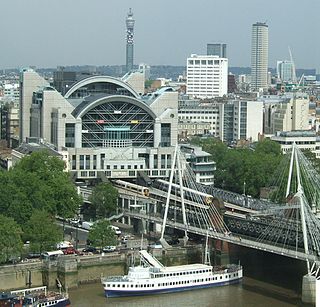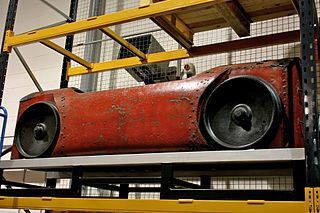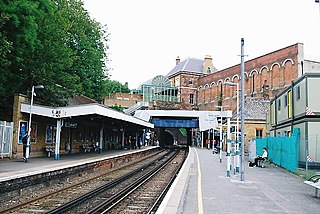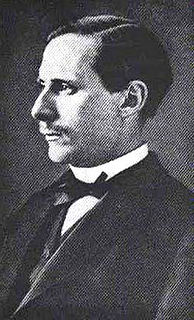This article needs additional citations for verification .(September 2007) (Learn how and when to remove this template message) |
Thomas Webster Rammell was born in 1814 on the Isle of Thanet, Kent, United Kingdom. He became an engineer, working for the Metropolitan Board of Works. He was a close friend of Henry Austin, son-in-law of Charles Dickens.

The Isle of Thanet lies at the most easterly point of Kent, England. While in the past it was separated from the mainland by the 600-metre-wide (2,000 ft) Wantsum Channel, it is no longer an island.

Kent is a county in South East England and one of the home counties. It borders Greater London to the north west, Surrey to the west and East Sussex to the south west. The county also shares borders with Essex along the estuary of the River Thames, and with the French department of Pas-de-Calais through the Channel Tunnel. The county town is Maidstone.

The United Kingdom, officially the United Kingdom of Great Britain and Northern Ireland but more commonly known as the UK or Britain, is a sovereign country lying off the north-western coast of the European mainland. The United Kingdom includes the island of Great Britain, the north-eastern part of the island of Ireland and many smaller islands. Northern Ireland is the only part of the United Kingdom that shares a land border with another sovereign state—the Republic of Ireland. Apart from this land border, the United Kingdom is surrounded by the Atlantic Ocean, with the North Sea to the east, the English Channel to the south and the Celtic Sea to the south-west, giving it the 12th-longest coastline in the world. The Irish Sea lies between Great Britain and Ireland. With an area of 242,500 square kilometres (93,600 sq mi), the United Kingdom is the 78th-largest sovereign state in the world. It is also the 22nd-most populous country, with an estimated 66.0 million inhabitants in 2017.
Contents
In 1849 he visited the North Devon town of Barnstaple to open an inquiry into the "sewage, drainage and supply of water and the sanitary conditions of the inhabitants".

Devon, also known as Devonshire, which was formerly its common and official name, is a county of England, reaching from the Bristol Channel in the north to the English Channel in the south. It is part of South West England, bounded by Cornwall to the west, Somerset to the north east, and Dorset to the east. The city of Exeter is the county town. The county includes the districts of East Devon, Mid Devon, North Devon, South Hams, Teignbridge, Torridge, and West Devon. Plymouth and Torbay are each geographically part of Devon, but are administered as unitary authorities. Combined as a ceremonial county, Devon's area is 6,707 km2 and its population is about 1.1 million.

Barnstaple is the main town of North Devon, England and possibly the oldest borough in the United Kingdom. It is a former river port, located at the lowest crossing point of the River Taw, flowing into the Bristol Channel.
He died in 1879 as a result of developing diabetes. Shortly before his death his wife wrote to Richard Temple-Grenville, 3rd Duke of Buckingham and Chandos, an old friend, asking whether he had any knowledge of insulin which had recently been developed. Rammell is buried in an unmarked grave in Watford. Contrary to popular belief, he did not die in poverty.

Insulin is a peptide hormone produced by beta cells of the pancreatic islets; it is considered to be the main anabolic hormone of the body. It regulates the metabolism of carbohydrates, fats and protein by promoting the absorption of carbohydrates, especially glucose from the blood into liver, fat and skeletal muscle cells. In these tissues the absorbed glucose is converted into either glycogen via glycogenesis or fats (triglycerides) via lipogenesis, or, in the case of the liver, into both. Glucose production and secretion by the liver is strongly inhibited by high concentrations of insulin in the blood. Circulating insulin also affects the synthesis of proteins in a wide variety of tissues. It is therefore an anabolic hormone, promoting the conversion of small molecules in the blood into large molecules inside the cells. Low insulin levels in the blood have the opposite effect by promoting widespread catabolism, especially of reserve body fat.

Watford is a town and borough in Hertfordshire, England, 15 miles (24 km) northwest of central London.

Poverty is the scarcity or the lack of a certain (variant) amount of material possessions or money. Poverty is a multifaceted concept, which may include social, economic, and political elements. Absolute poverty, extreme poverty, or destitution refers to the complete lack of the means necessary to meet basic personal needs such as food, clothing and shelter.




















